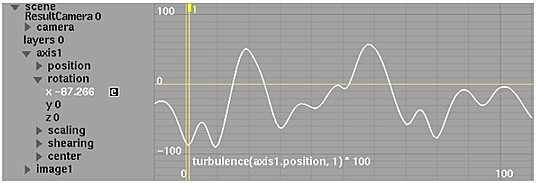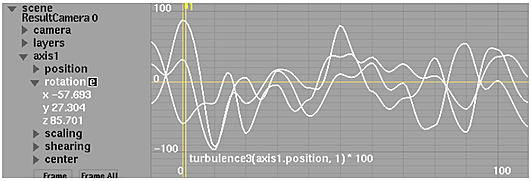Random Number Functions
Use the following functions to create curves based on random values.
rand
Returns a random value between -1 and 1, based on the value used as an argument, called the seed. Using the same seed in the rand function for multiple channels produces the exact same results. To create completely random results, use the true rand function.
| Syntax | rand(Seed) |
| Arguments | Seed is the value used to generate the random return value. This is usually set to a changing value such as the current frame number. |
| Examples |
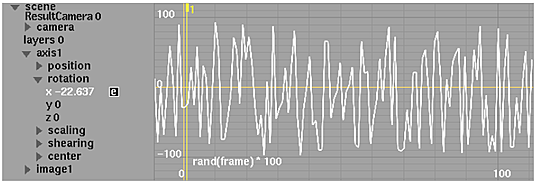 |
truerand
Returns a truly random value between two given numbers. The sequence of returned values will constantly change, never reproducing past results.
| Syntax | truerand(Low, High) |
| Arguments | Low and High are the upper and lower bounds, respectively, of the random number to generate. |
| Examples | truerand(-5.5,10.8) returns a truly random value between -5.5 and 10.8. |
noise
Returns a random value between -1 and 1, based on a given vector. If the parameter varies smoothly, this function will return a continuously changing value that also varies smoothly.
| Syntax | noise(Position) |
| Arguments | Position is a vector used as a seed for the returned random value. |
| Examples |
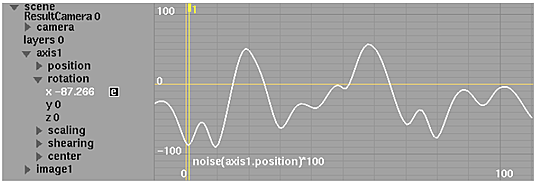 |
noise3
Returns a random vector for all elements in a vector between -1 and 1. If the parameter varies smoothly, this function will return a vector of continuously changing values that also vary smoothly.
| Syntax | noise3(Position) |
| Arguments | Position is a vector used as a seed for the returned random vector. |
| Examples |
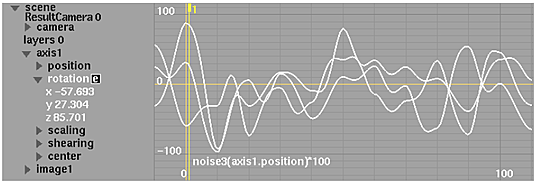 |
fnoise
Returns a random value between -1 and 1, based on a given vector. If the parameter varies smoothly, this function will return a continuously changing value that also varies smoothly to a fractal pattern. This function is similar to the noise function, but it applies a fractal pattern to the result.
| Syntax | fnoise(Position) |
| Arguments | Position is a vector used as a seed for the returned random value. |
| Examples |
 |
turbulence
Returns a random value between -1 and 1, based on a given vector and with the ability to control the level of smoothness for the resulting curve.
| Syntax | turbulence(Position, Level) |
| Arguments |
|
| Examples |
|
turbulence3
Returns a random vector for all elements in a vector between -1 and 1, along with the ability to control the smoothness of the resulting curve. If the position parameter varies smoothly, this function will return a vector of continuously changing values that also vary smoothly.
| Syntax | turbulence3(Position, Level) |
| Arguments |
|
| Examples |
|

